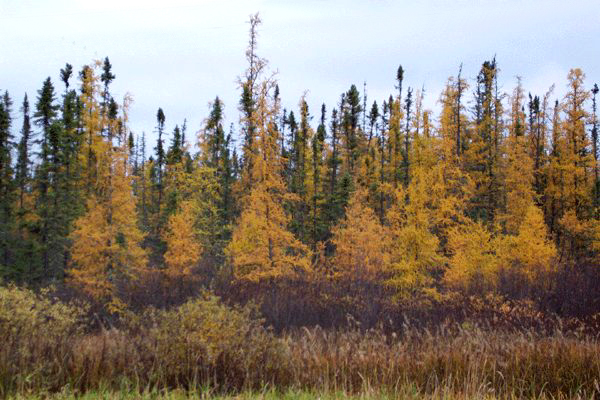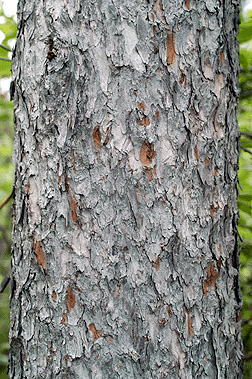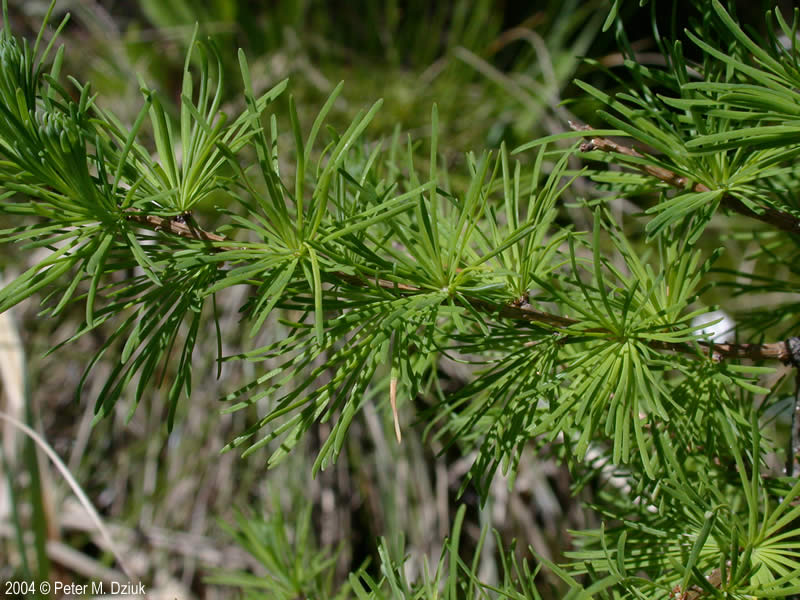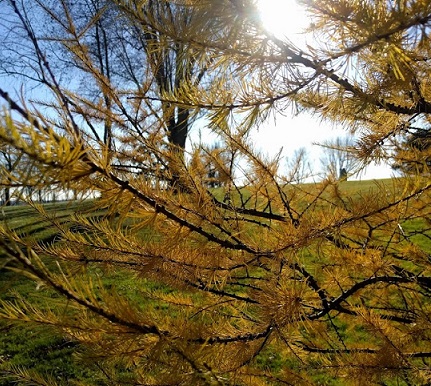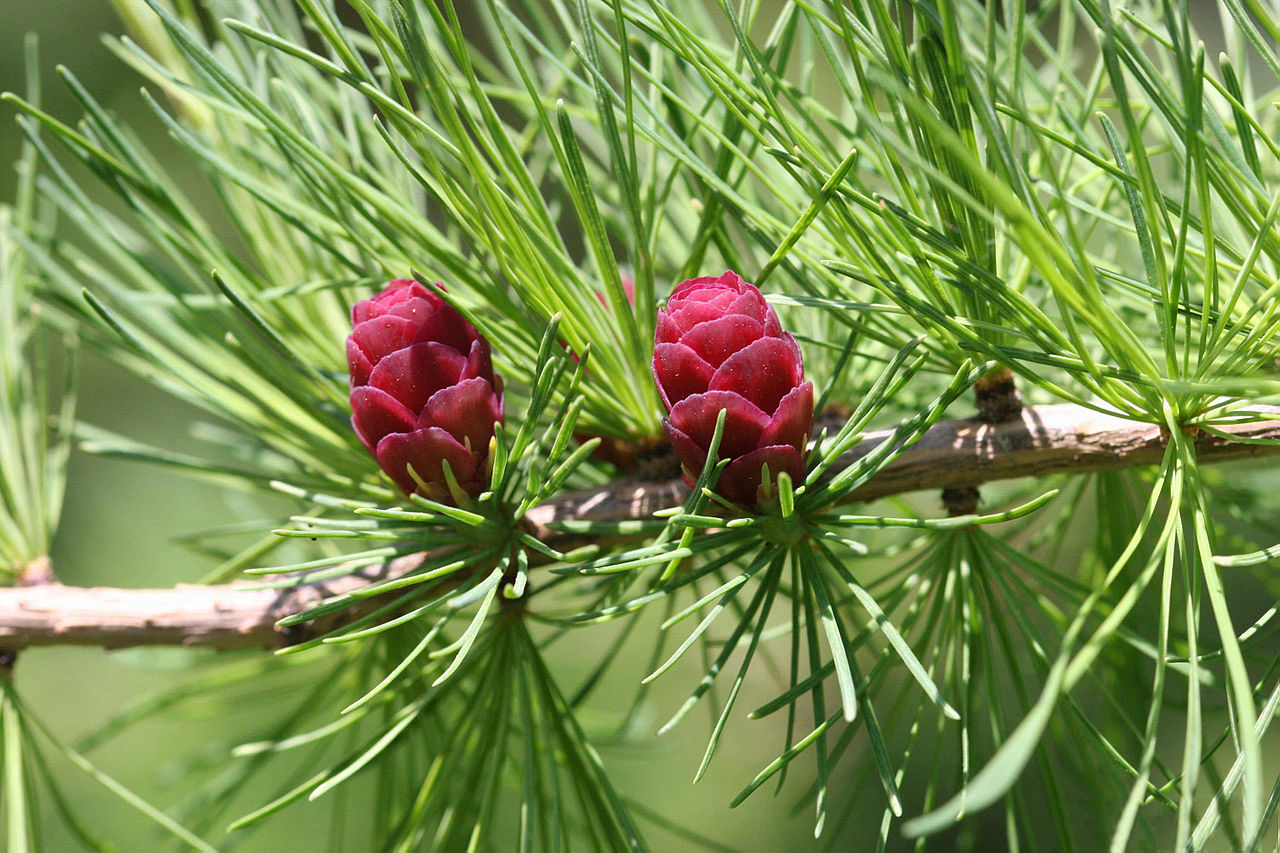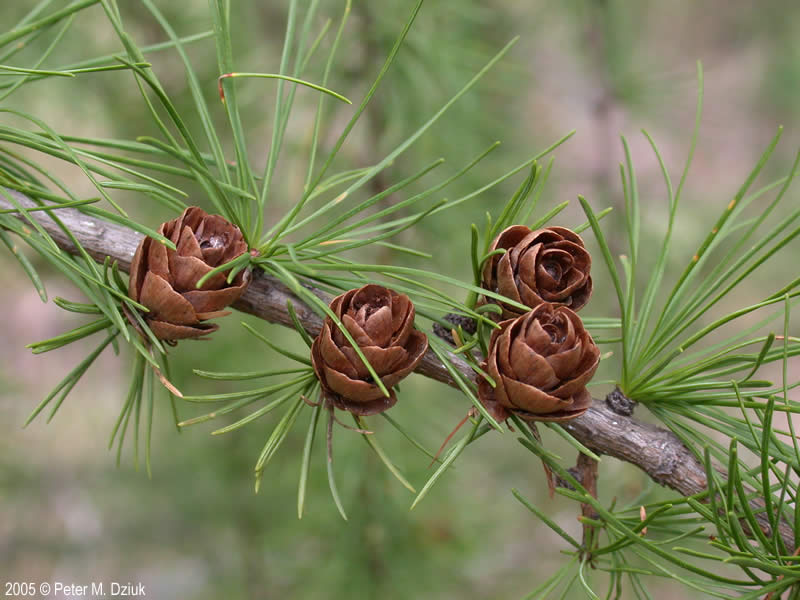November 22, 2017
Wednesday, November 22, 2017 - 8am
By: Brianna Egge
Larix laricina, commonly referred to as tamarack, or eastern larch, is a United States native deciduous conifer. Tamaracks are adept to very cold climates and are distributed across most of northern North America. In the southern distribution, they are native species to swamps and bogs with poorly drained soils; further north they are more common on better drained uplands. Tamarack survives in USDA Hardiness Zones 2-5. Tamarack are medium to large trees that typically grow 40-80 feet tall with a pyramidal shape. They prefer full sun and grow best in moist, acidic, well drained soils but can tolerant light shade. These trees are not tolerant of full shade, dry soils, or many city pollutants so would not be well suited for harsh urban conditions.
Photo Credit: Steven Katovich Photo Credit: Peter M. Dziuk
The word ‘Tamarack’ originated from the Abenaki Native American word ‘Hackmatack’ which means ‘wood for making snowshoes’. Hackmatack is another name used to refer to tamarack but not as well known. The wood of tamarack trees have also been historically used for the runners of dog sleds but is more commonly used as pulpwood these days. Although tamarack trees would not be ideal for harsh urban conditions, they are beautiful trees that would make a great addition to rain gardens or sunny areas in one’s yard with plenty of moisture.
All photos and references are used for educational purposes only.
References
- “Larix laricina.” Missouri Botanical Garden: Plant Finder. Missouri Botanical Garden, n.d. Web. 11 November 2017. <http://bit.ly/2hGwO06>
- “Larix laricina: Tamarack.” Minnesota Wildflowers. Minnesota Wildflowers, n.d. Web. 11 November 2017. <http://bit.ly/2B6SP0G>
- “Larix laricina Fact Sheet.” Virginia Tech Dendrology. Virginia Tech Dept. of Forest Resources and Environmental Conservation, 2017. Web. 20 November 2017. <http://bit.ly/2zm3ibe>
- David, Andrew. “FNRM 1101 Dendrology: larches, Douglas-fir, hemlocks.” FNRM 1101 Dendrology Lecture 20. University of Minnesota, 2 December 2016. University of Minnesota - Twin Cities, St. Paul, MN. Lecture.
- “Larix laricina, Tamarack.” University of Wisconsin - La Crosse. University of Wisconsin - La Crosse, n.d. Web. 11 November. <http://bit.ly/2iBbs5h>
Photos
- "Forest, with Picea mariana behind, northern Minnesota." Wikimedia Commons. U.S. National Oceanic and Atmospheric Administration, 9 July 2006. Digital Image. 20 November 2017. <http://bit.ly/2zUnWOM>
- "Larix laricina bark." Virginia Tech Dendrology. Virginia Tech Dept. of Forest Resources and Environmental Conservation, 2017. Digital Image. 20 November 2017. <http://bit.ly/2hFV1E1>
- Dziuk, Peter, M. "Photo of leaves." Minnesota Wildflowers. Minnesota Wildflowers, 2004. Digital Image. 20 November 2017. <http://bit.ly/2mJYuqn>
- Egge, Brianna. "Larix laricina fall color, MN." November 2017. St. Paul, MN: University of Minnesota. Digital Image. 22 November 2017. <http://bit.ly/2zrUP6K>
- Katovich, Steven. "Foliage and immature cones, USA." Wikimedia Commons. USDA Forest Service, 29 November 2008. Digital Image. 20 November 2017. <http://bit.ly/2zSIo31>
- Dziuk, Peter, M. "Photo of mature fruit." Minnesota Wildflowers. Minnesota Wildflowers, 2005. Digital Image. 20 November 2017. <http://bit.ly/2iBNerQ>
